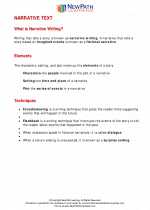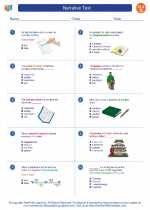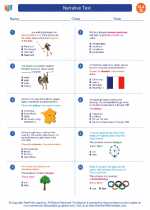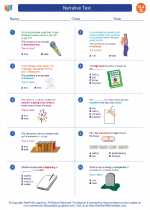Narrative Text
What is Narrative Writing? Writing that tells a story is known as narrative writing. A narrative that tells a story based on imagined events is known as a fictional narrative. The characters, setting, and plot make up the elements of a story. Characters-the people involved in the plot of a narrative. Read More...
◂English Language Arts Worksheets and Study Guides Seventh Grade. Narrative Text
Study Guide Narrative Text
Narrative Text  Worksheet/Answer key
Worksheet/Answer key Narrative Text
Narrative Text  Worksheet/Answer key
Worksheet/Answer key Narrative Text
Narrative Text  Worksheet/Answer key
Worksheet/Answer key Narrative Text
Narrative Text 

 Worksheet/Answer key
Worksheet/Answer key
 Worksheet/Answer key
Worksheet/Answer key
 Worksheet/Answer key
Worksheet/Answer key

The resources above cover the following skills:
Reading Standards for Literature
Key Ideas and Details
Determine a theme or central idea of a text and analyze its development over the course of the text; provide an objective summary of the text. [RL.7.2]
Analyze how particular elements of a story or drama interact (e.g., how setting shapes the characters or plot). [RL.7.3]